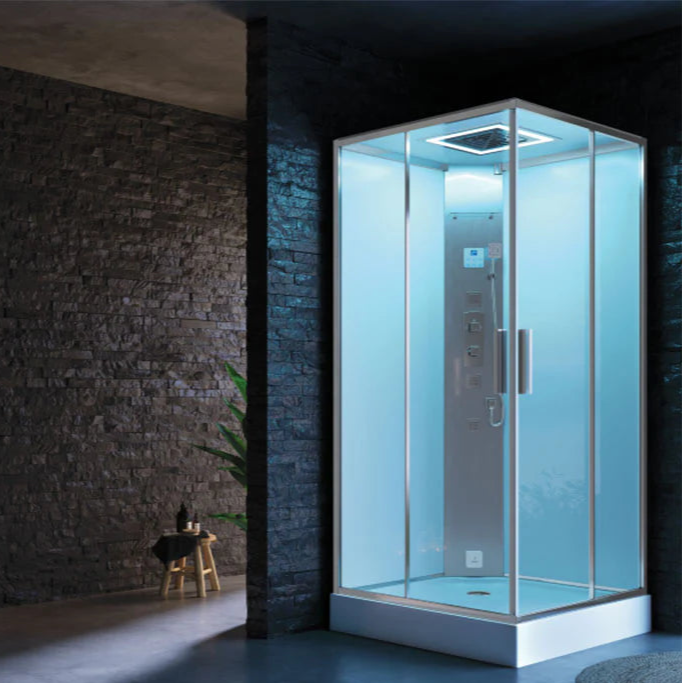When your child sounds like a tiny seal after a night’s sleep, it’s probably not the new family pet—it could be croup. Don’t panic! A Steam Room or Steam Bath might just be the soothing trick you need. Short answer: Yes, a warm, steamy environment can help ease croup symptoms like a barking cough and hoarseness. Keep reading to discover safe methods and when to call the GP.

Understanding Croup: Symptoms, Causes, and When to Worry
What is Croup?
Croup is a common childhood illness that affects the upper airways. It's usually caused by a virus, leading to inflammation of the voice box (larynx) and windpipe (trachea).
This swelling results in a distinctive barking cough, hoarseness, and noisy breathing (stridor). It often worsens at night and can be distressing for both child and parent.
Common Symptoms (Barking Cough, Stridor, Hoarseness)
-
Bark-like cough
-
Noisy, high-pitched breathing (stridor)
-
Hoarse voice
-
Worsening symptoms during the night or when upset
Viral Causes of Croup
Most cases of croup are caused by viruses, especially the parainfluenza virus. It often spreads through coughs, sneezes, or contaminated surfaces.
Who is Most Affected (Age Range, Risk Factors)
Croup mostly affects children aged 6 months to 3 years, though it can occur outside this range. Children with smaller airways or a history of respiratory conditions may be more prone.
Recognising Serious Symptoms and When to Seek Medical Attention
Signs of Respiratory Distress (Trouble Breathing, Bluish Skin, Drooling)
Watch for:
-
Rapid or laboured breathing
-
Flaring nostrils
-
Bluish tint around lips or fingertips
-
Drooling or trouble swallowing
These may signal a more serious condition needing urgent care.
When to Call Your Doctor or Go to the ER
Seek immediate medical help if:
-
Your child is struggling to breathe
-
Symptoms worsen despite home remedies
-
There’s a high fever or persistent symptoms over several days
Importance of Staying Calm During a Croup Attack
Children pick up on anxiety quickly. Stay calm, reassure them, and help them sit upright to ease breathing. Panic can make symptoms worse.
Steam Shower and Other Home Remedies for Croup
The Role of Moist Air: Steam Shower and Humidifiers
How a Steam Shower Can Help (Mechanism of Action for Soothing Airways)
A steam shower helps by moistening dry, irritated airways, making breathing easier. Warm, damp air can also loosen mucus and reduce swelling in the throat.
How to Create a Safe Steam Environment (Safety Precautions, Duration)
-
Turn the hot shower on and close the door to create a steam room
-
Sit outside the shower with your child for 10–15 minutes
-
Never put your child directly in hot water or under steam
-
Stay with them and monitor closely
Using a Cool-Mist Humidifier
A cool-mist humidifier is another effective option. It keeps air moist overnight, helping to ease symptoms while your child sleeps.
Comparing Steam vs. Cool Mist
| Method | Best For | Safety Notes |
|---|---|---|
| Steam Shower | Immediate, short-term relief | Supervise child closely |
| Cool-Mist Humidifier | Overnight support | Clean regularly to prevent mould |
Additional Home Care Strategies
The Benefits of Cool Air (Outdoor Air, Open Freezer)
Surprisingly, cold air can help reduce airway swelling. Taking your child outside or standing in front of an open freezer (briefly) may offer relief.
Hydration and Fluid Intake (Water, Ice Lollies, Warm Fluids)
Keep your child hydrated with small sips of water, warm fluids, or ice lollies. Fluids help thin mucus and soothe the throat.
Comfort Measures and Positioning (Sitting Upright, Calming the Child)
Keep your child upright—this helps with breathing. Gentle cuddles and soft singing can also help them stay calm during coughing fits.
Over-the-Counter Medications for Fever and Pain
Paracetamol or ibuprofen (appropriate for age) can help reduce fever and discomfort. Always follow dosage guidelines and avoid aspirin in children.
What to Avoid
-
Cough suppressants
-
Essential oils (especially in babies and toddlers)
-
Smoking or exposure to smoke
-
Vapour rubs not meant for young children
Beyond Home Remedies: Medical Treatments for Croup

When Medical Intervention is Needed
Medications (Corticosteroids, Epinephrine)
For moderate to severe croup, doctors may prescribe oral corticosteroids to reduce inflammation. In emergency settings, epinephrine may be used for fast relief.
Hospitalisation (Severe Cases, Monitoring)
If your child has significant difficulty breathing or isn’t responding to treatment, they may need hospital monitoring for oxygen support or medication.
Preventing the Spread of Croup
Hand Hygiene
Teach children to wash hands frequently. Good hygiene is key to reducing viral spread.
Avoiding Contact with Sick Individuals
Keep your child away from others showing cold or flu symptoms, especially during peak virus seasons.
Key Takeaways
-
A steam shower or steamy bathroom can offer gentle, natural relief for mild croup symptoms.
-
Always supervise your child during steam therapy, and keep sessions short.
-
Pair steam with hydration, comfort, and cool air for best results.
-
Watch for warning signs—seek help if your child has trouble breathing or symptoms worsen.
-
Maintain hygiene and avoid exposure to help prevent croup.






